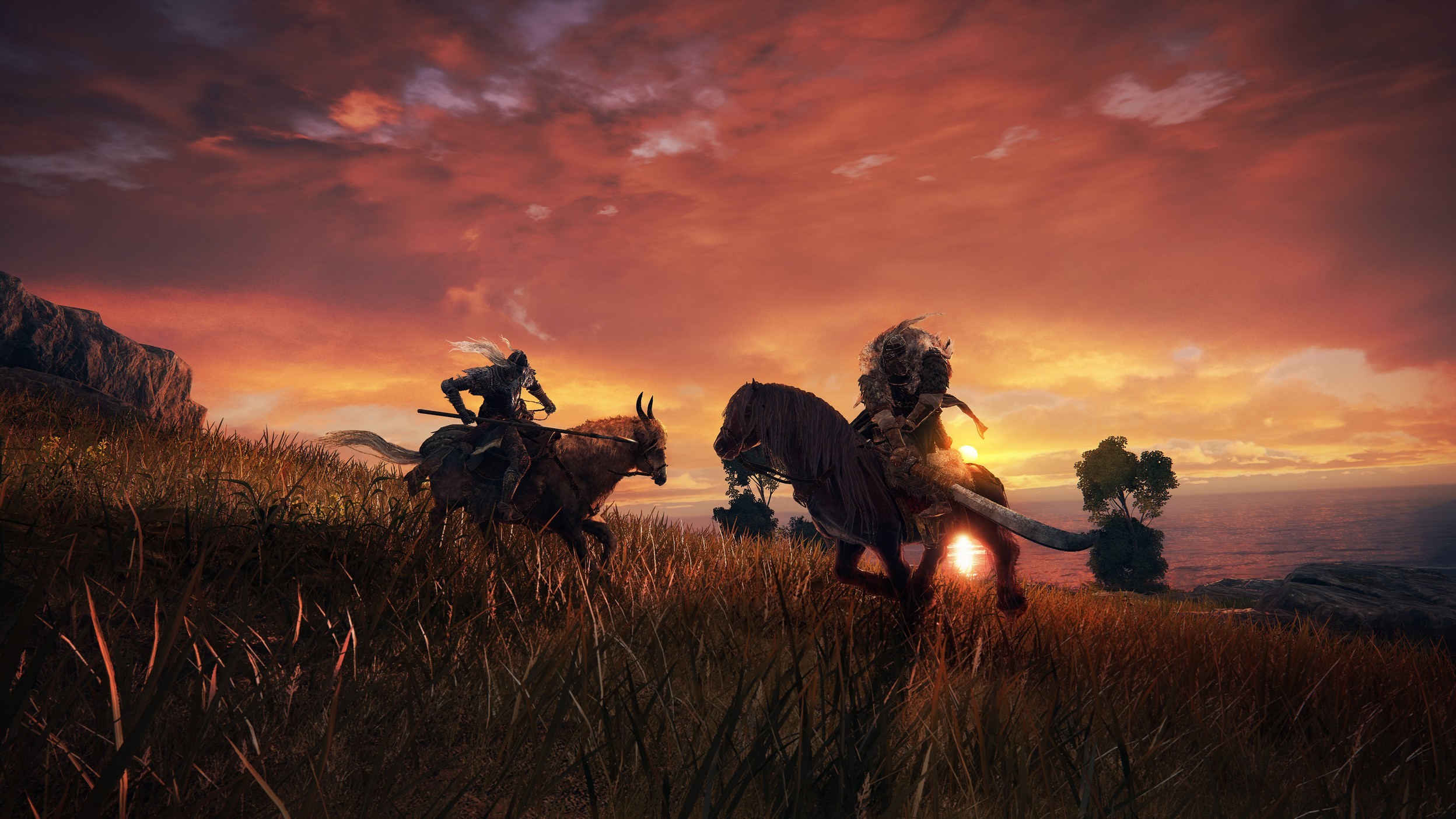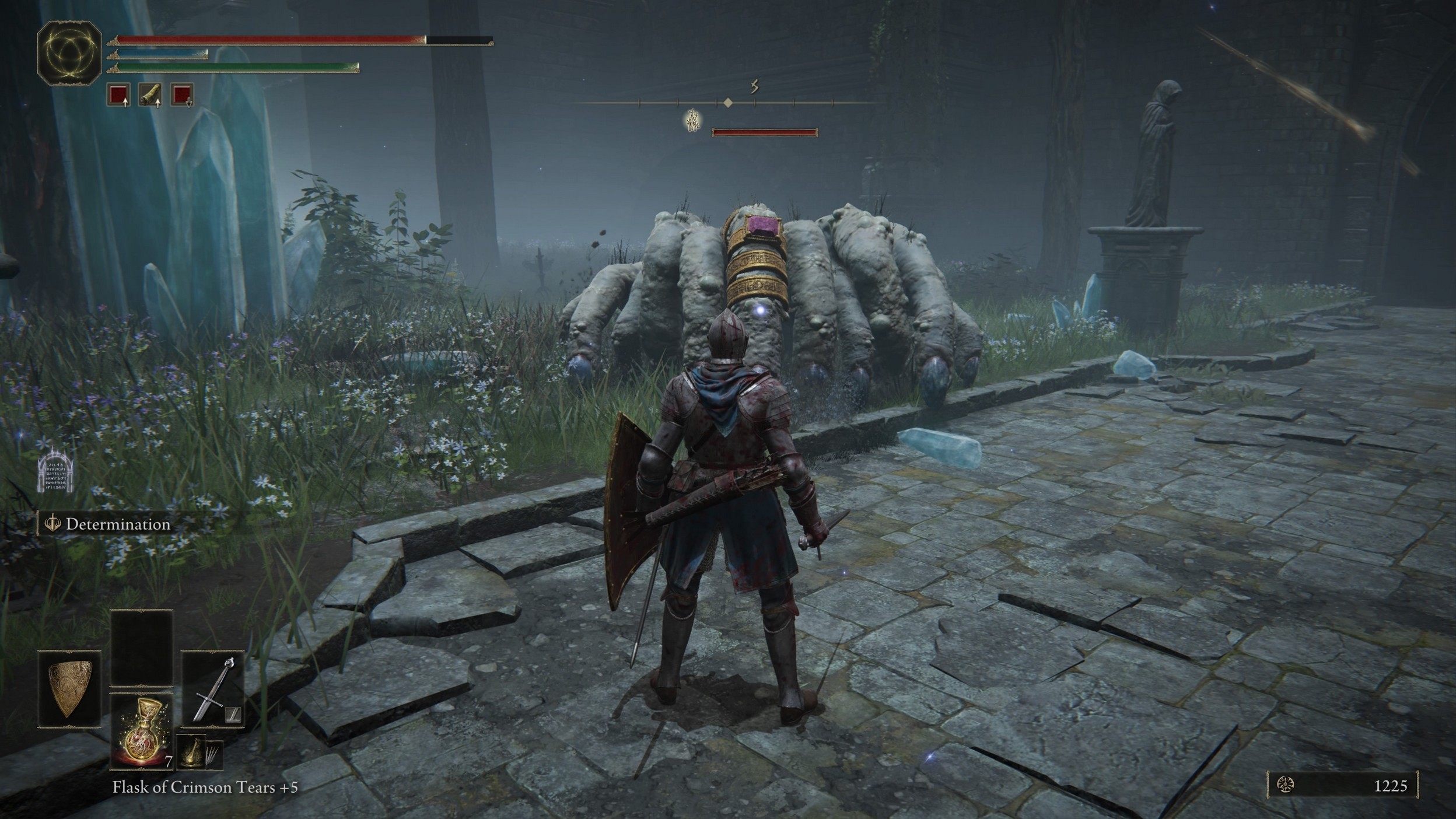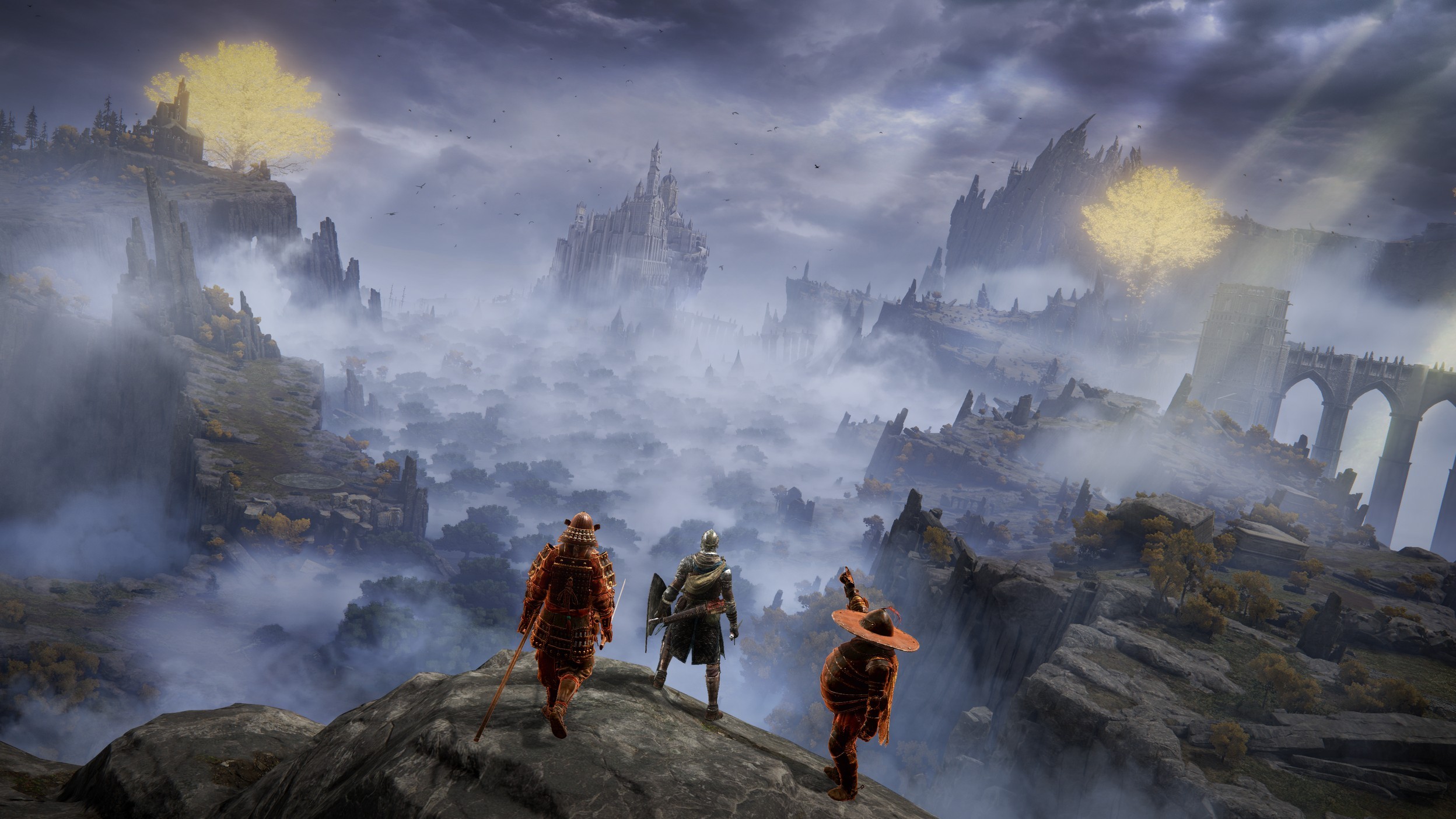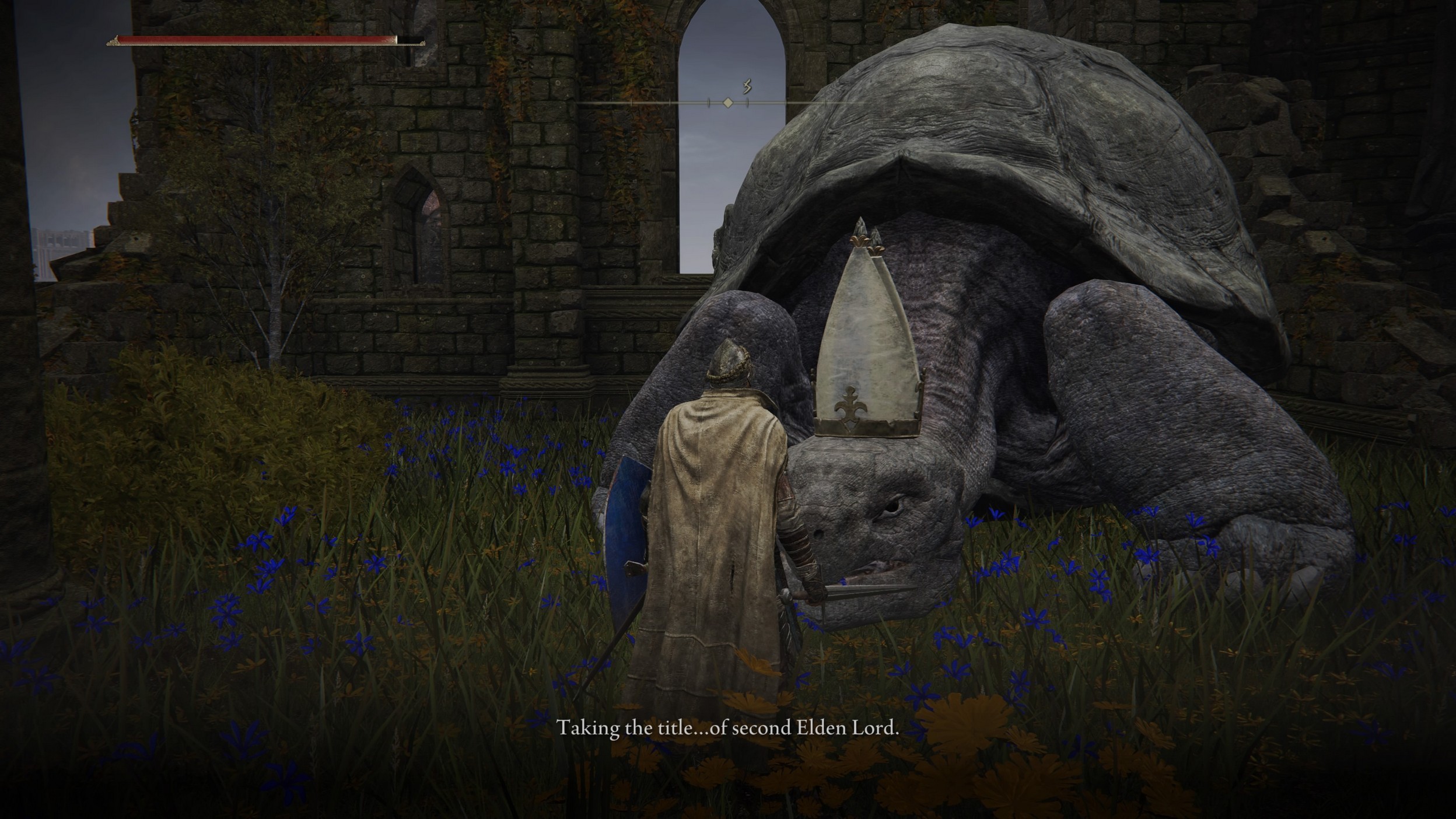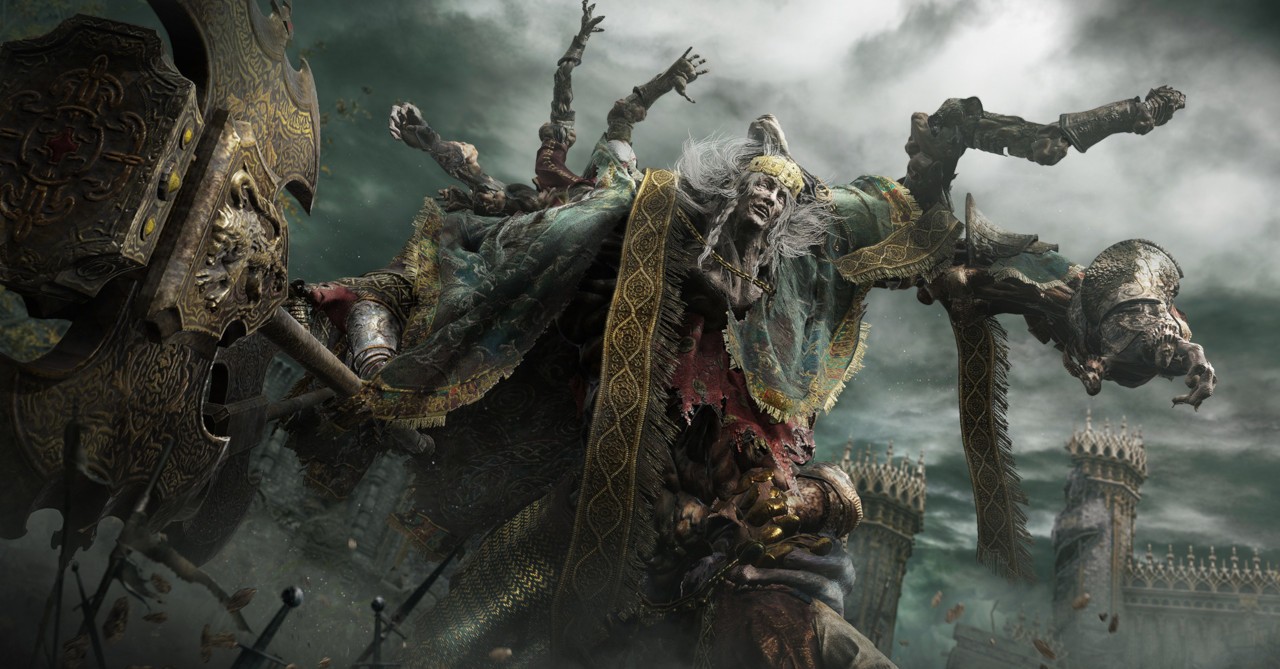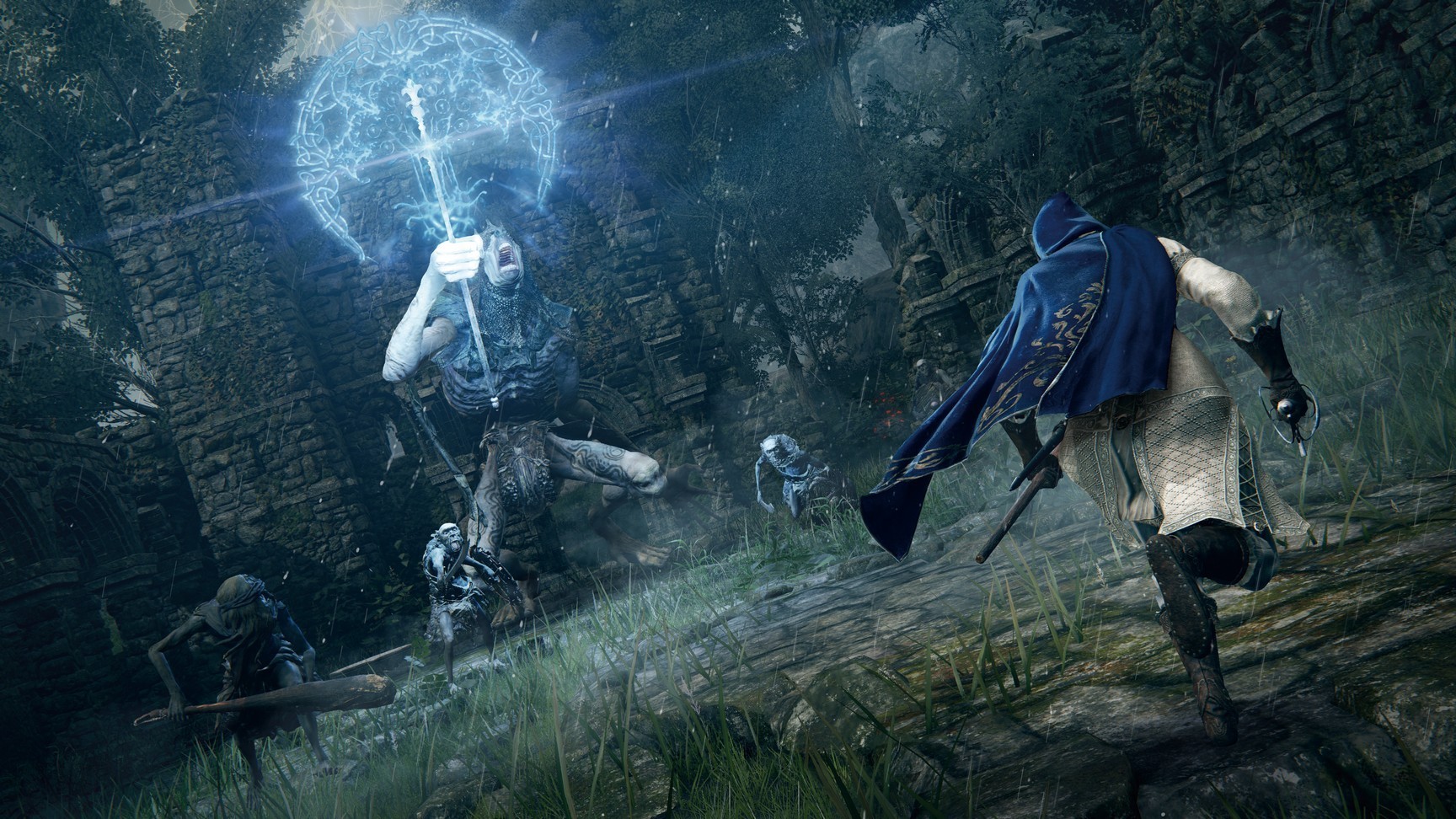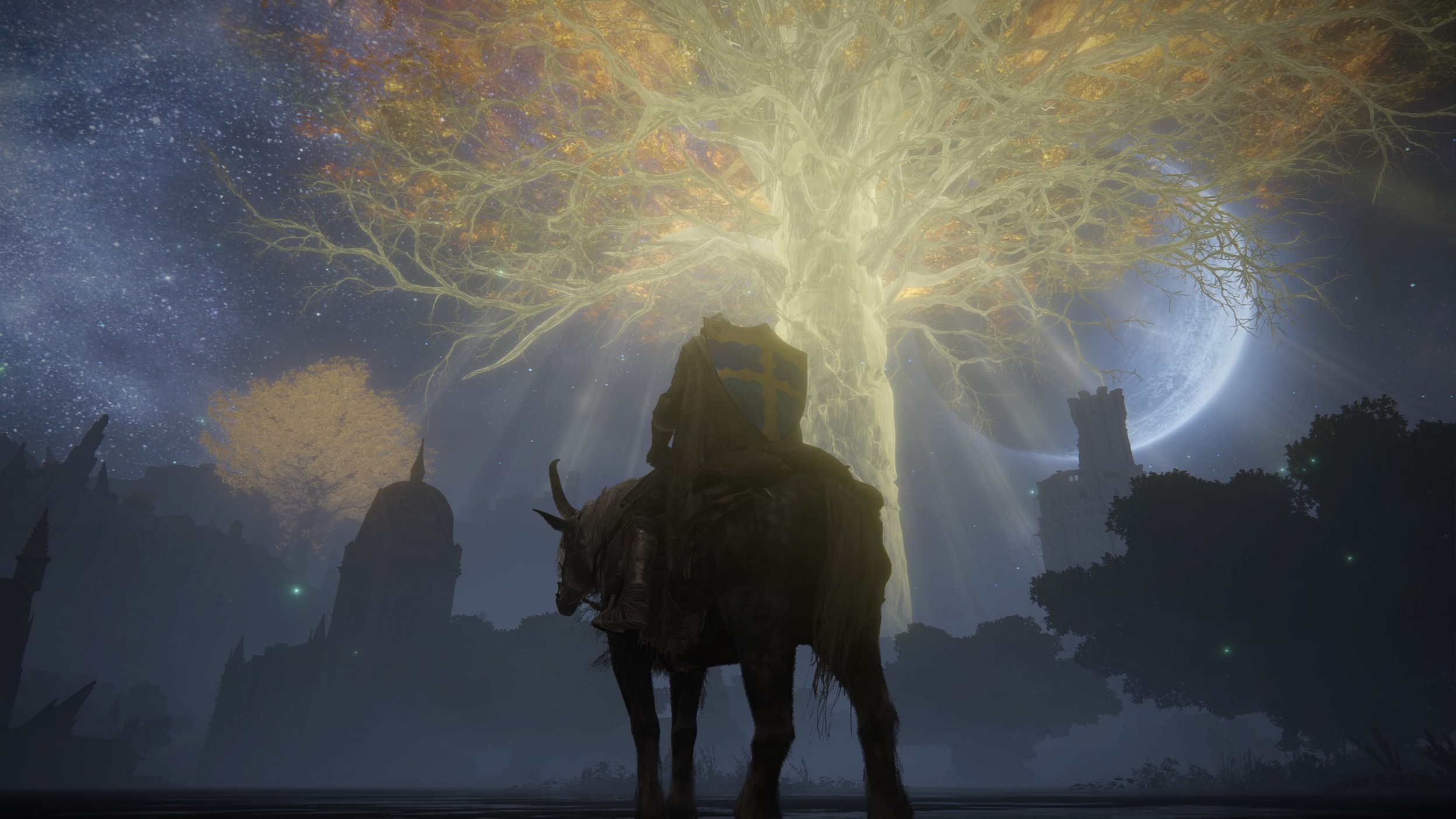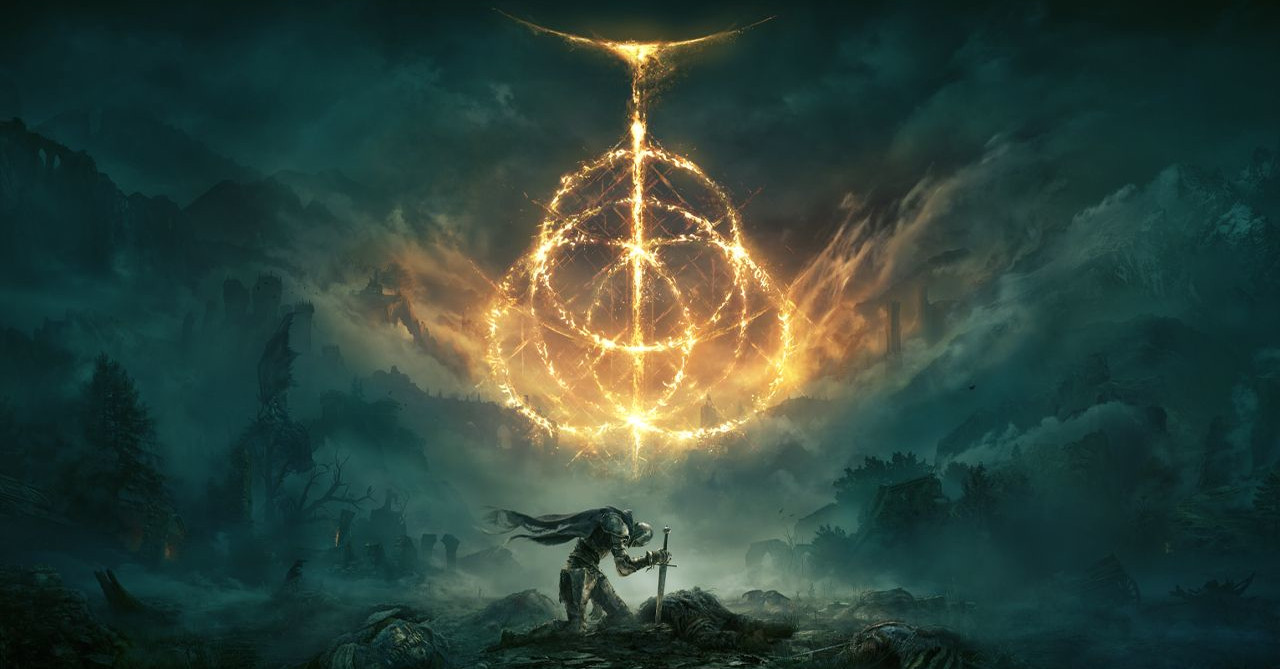Elden Ring Review | Souls Perfected
Elden Ring perfects the Soulsborne formula, all while adding a compelling open world and featuring some of FromSoftware's best bosses.
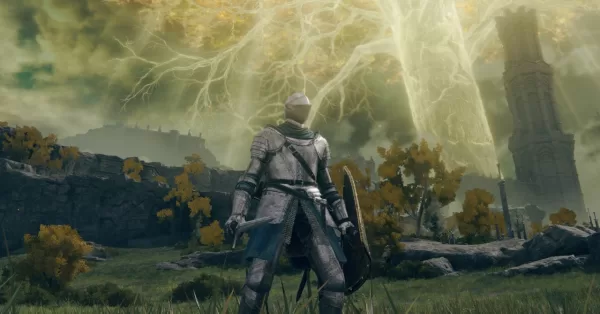
Even when Elden Ring gameplay was unveiled last year, it was already being hailed as a 2022 Game of the Year contender, and for good reason. FromSoftware’s Soulsborne games (including Sekiro) have all been praised by critics and fans alike, not just for their rewarding challenges, but also for their atmosphere, game design, and combat. And Elden Ring promises to be the culmination of everything that FromSoftware has done up to this point, at least based on previews and interviews leading up to the game’s release.
Elden Ring comes with titanic hype, but does it deliver? Well, in my opinion, it truly is the Dark Souls formula, perfected.
Combat Evolved
There’s a lot to say about Elden Ring, but what I want to start off with is its combat. At its core, Elden Ring plays similarly to Dark Souls 3, both in terms of speed and stats, albeit with some changes and additions.
Dark Souls 3 has great combat mechanics, though for melee builds, the best strategy is often to roll through everything and mash R1 (or the light attack button). Sure, you can opt to try other playstyles, but for most players, rolling and mashing R1 is all you need, especially as most enemies move fast, making R2/heavy attacks too risky.
Elden Ring solves this by introducing the Super Armor mechanic. Essentially, Super Armor is like the Posture meter in Sekiro, but instead of being a visible bar, players can’t see an enemy’s Super Armor bar. How it works is that when players hit an enemy, they will decrease the Super Armor bar, and once it is depleted, an enemy will be staggered, leaving them open to a strong Critical Hit. Take note, to deplete Super Armor faster, you’ll need to use heavy attacks, charged heavy attacks, jumping attacks, or the newly-introduced Guard Counters (which you can use by pressing R2/RT after a successful block). You can also Parry attacks with a small shield to break an enemy’s Super Armor, but some bosses require multiple parries before you can get a Critical Hit.
A lot of enemies as well as some bosses have high health, so getting a Critical Hit is a must to take them down. Given this, mixing heavy or jump attacks are often needed to kill certain enemies, meaning you can’t just R1 spam your way to victory.
Alongside Super Armor, the game also features the Poise mechanic from the Dark Souls games. Poise in Elden Ring works similarly, so enemies with low Poise can be stun locked. Given that low Poise enemies often move quicker to make up for this, light attacks are often the better choice.
Taken on their own, these mechanics may not seem that complex, but together, they make combat in Elden Ring deeper and arguably more rewarding to master than even previous FromSoftware games. After all, the previous Souls games often require you to master one main mechanic to succeed (dodging in DS3/Bloodborne or parrying in Sekiro), but in Elden Ring, you truly need to master all the abilities at your disposal to succeed — and that’s just in melee combat!
As shown in previews, Elden Ring features a magic system that’s an expanded version of Dark Souls 3’s magic. In this game, you get a wider variety of spells, some of which are incredibly powerful. While I wasn’t able to fully explore magical combat in the game (as my main run was with a Sword & Board Quality build), I did find that, while powerful, spells don’t make the game a cakewalk as some enemies have counters to your magic.
What I did get to try extensively is the summoning mechanic. Elden Ring introduces Spirit Ashes which are basically summons which can help you in certain encounters, including most bosses. These Spirit Ashes range from three wolves, to a powerful knight or a healer. Whether you use a melee or a ranged build, these summons are invaluable in certain situations, especially as they can distract enemies or a boss for you while you try to heal. Though take note, while they are useful tools, they won’t make bosses easy; even if you upgrade them, they will still die if you let a boss whack on them continuously.
Speaking of ashes, Elden Ring also has Ashes of War which is essentially an expanded version of Dark Souls 3’s Weapon Art. Unlike Weapon Arts which are locked to a certain weapon, you can assign Ashes of War to most weapons (except special ones), so you can choose which weapon skill best suits your playstyle. Aside from giving you a skill, Ashes of War also let you modify your weapon’s scaling, or give it an elemental attack.
Another powerful feature against bosses is Mounted Combat. In Elden Ring, you get a spirit steed named Torrent to help you traverse long distances in the open world faster, but Torrent can also be used against enemies. While riding Torrent, you can attack with your melee weapon, shoot bows, or use magic — this is an important skill to practice as there are lots of enemies in the overworld that are designed to be fought while riding Torrent. Take for instance dragons; these bosses are fast, can fly, and spew fire over a large area. While you can fight them on foot, you’ll have a better chance of conquering them while riding your spirit steed to dodge, especially as a lot of these bosses can kill you in just two or three hits (or even one if your health is low enough).
Mounted Combat may not be as deep as combat on foot in terms of mechanics, but it is compelling in its own right as you need to focus more on movement and getting attack in at opportune moments while galloping. This makes Mounted Combat feel like deadly jousts against foes, making for a nice change of pace if you just came from a grueling dungeon.
From new combat mechanics to a deep magic system, Elden Ring gives you a lot of tools in combat. But these don’t make the game easy, in fact, you’ll need most of these as the enemies in the game are varied and powerful in their own right.
While I won’t go into detail about the enemies that you’ll encounter (so that you can discover them on your own), there is an impressive amount of unique enemies that you’ll face. Each of them have their own strengths and weaknesses that will keep you on your toes and force you to use the game’s range of mechanics. This great enemy variety is pretty much the icing on the cake that makes the combat of Elden Ring a culmination of FromSoftware’s work up this point.
Based on combat alone, Elden Ring is already a must-play, but adding on to that is one of the best-designed open worlds in recent memory.
Rewarding Exploration
The Soulsborne games feature lots of iconic levels, but most of them are hallways with branching paths (not including the larger areas like Farron Keep in DS3). In Elden Ring, FromSoftware makes the jump to an open world design, and it is an incredibly large one that is rewarding to explore in full.
Other open world games tend to fall into the trap of feeling less like a world and more of an open space with objectives that can feel like items on a checklist. But in Elden Ring, the open world does not suffer from this. Sure, the game does have your typical optional dungeons and enemy camps, but instead of having a map filled with question marks, Elden Ring’s map only hints at what you might stumble upon, giving you a stronger sense of discover. Plus, there are lots of cool things to see in the world that I don’t want to spoil.
Exploring the world isn’t a requirement to face the next story boss, but the game is designed in such a way that exploration is encouraged. This is because main story bosses are often powerful enough that you need to upgrade your gear to succeed. To get upgrade materials, you then need to look for mines, or other dungeons. While exploring, you might even find something that will make a particularly tough boss fight more manageable.
As for navigating through the world, the game does not have floating objective markers. Instead, Sites of Grace (aka Bonfires) point you to the path of your next objective. This might not seem that helpful at first, but a guide pointing you the right way is all you need thanks to how well-designed the open world is. Specifically, the world is designed in such away that it funnels you to where you need to go naturally, all without feeling restrictive.
On top of this, you can also see where you need to go clearly in most parts of the world as well. For example, if you need to go to a certain tower, you can usually see it in the distance and make your way there without getting lost.
Traversing through the open world will take up a lot of your time in this game, but some of the most memorable moments I have in Elden Ring are in Legacy Dungeons. These are large-scale dungeons that are similar to levels in Dark Souls, but with added verticality that’s rather reminiscent of Sekiro.
There are several Legacy Dungeons in Elden Ring, and in my opinion, some of them are the best levels I have ever played in any FromSoftware game, and I played through all of them (except Sekiro which I’ve yet to finish). Some of these excellent dungeons are found later in the game so I can’t mention them here, but what I can say is that Stormveil Castle (the first Legacy Dungeon) is already impressive to the point that, in my opinion, it rivals the design of levels such as Irithyll of the Boreal Valley or Anor Londo.
Whether in Legacy Dungeons or in the overworld, you will find NPCs if you explore them thoroughly. Much like in Dark Souls, a lot of these NPCs have their own quests which you can embark on. Though these quests aren’t tracked in game, meaning they can be fairly easy to miss. While I personally would’ve wanted something like an in-game journal to keep track of NPC quests (think something from Morrowind), this NPC quest design has become a FromSoftware signature. Plus, there is a strong sense of satisfaction in completing a quest through putting two and two together instead of relying on objective markers.
The NPCs are also integral in getting an understanding of the game’s world and story. In typical Souls fashion, the story of Elden Ring isn’t clear-cut. Instead, you only get fragments of events that happened in the past from NPC dialogue. Combining these fragments with item descriptions is key in getting an understanding of the world. Though I have to admit that I still don’t have a clear grasp of the game’s story, but what I can say is that the world is an intriguing one, arguably even more so than Dark Souls.
Memorable Bosses
FromSoftware’s games are best known by their bosses, and in this regard, Elden Ring does not disappoint. In fact, it might just feature some of the best bosses FromSoftware has created to date!
Mechanically, a lot of the bosses are incredibly difficult. Take for instance Godrick the Golden, a boss that you fight fairly early into the game. Even if he’s not an end game boss, his moveset and difficulty rivaled that of the DLC bosses of previous Soulsborne games, in my opinion at least. Even with this difficulty, Godrick did not feel unfair, and conquering him gave me an incredible rush.
After Godrick, I was fearful that the game won’t be able to top it. But don’t worry, Elden Ring has even more bosses that are just as good, if not better than him. In fact, there are certain bosses that are on a scale that we haven’t seen before in any Souls game.
One thing that I was surprised by regarding bosses is how much I enjoyed some of the gimmick bosses. In previous Souls games, gimmick bosses (which are bosses with specific weaknesses or a puzzle-like mechanic) are either dull or annoying. But in Elden Ring, there are gimmick bosses that are still true tests of skill given their difficulty.
Most of the memorable boss fights are found in the game’s Legacy Dungeons, but there area also a myriad of bosses throughout the overworld. While these fights may not be as memorable as my favorites, they are still rewarding to fight and overcome. Plus, facing off against a boss while riding Torrent is a compelling challenge in its own right.
Almost Perfect
In terms of gameplay and open world, Elden Ring is pretty much perfect, though my playthrough of it wasn’t a 10/10 experience. I played the game on the PS5 and in the Prioritize Frame Rate mode, but the game wasn’t able to keep a consistent 60FPS. In fact, the frame rate dips noticeably when travelling through the open world atop Torrent, or in certain bosses. This didn’t ruin the game for me, nor did I die because of these dips, but it is a bit concerning that a machine as powerful as the PS5 can’t output 60FPS for a cross-gen title. Here’s hoping that the game gets a patch that improves performance, and that it performs well on the previous-gen consoles.
There are also two nitpicks that I have, the first of which is the uneven difficulty. Sometimes, there are big spikes in difficulty, though this makes sense as you can explore other areas if you are stuck on a dungeon or a boss. On the flip side, if you discover a dungeon designed for lower level characters while you’re already at a high level, you’ll easily plow through it. These uneven difficulty curve isn’t a major issue though as it is an unavoidable consequence of the game’s open world design.
Another thing that I noticed is that the game does repeat certain bosses and dungeons. Though at least there are some slight differences to keep encounters against similar foes interesting. Plus, the game does make up for this with its unique main bosses.
Final Verdict – 9.5/10
FromSoftware has outdone themselves with Elden Ring as they have taken the Dark Souls formula and perfected it in terms of combat, and expanded it with a compelling open world to explore. On top of these, the game features some of the best Legacy Dungeon levels in the Soulsborne series, along with, in my opinion, the best and most memorable set of bosses.
While our score for the game is 9.5 (just shy of perfect), the half point is deducted due to the framerate dips on the PS5. Though if not for this, or if the performance does get fixed in a future patch, Elden Ring is a 10/10 experience, and it is truly the Souls formula at its best.
This review was made with an Elden Ring review code for PS5 provided by the publisher.




